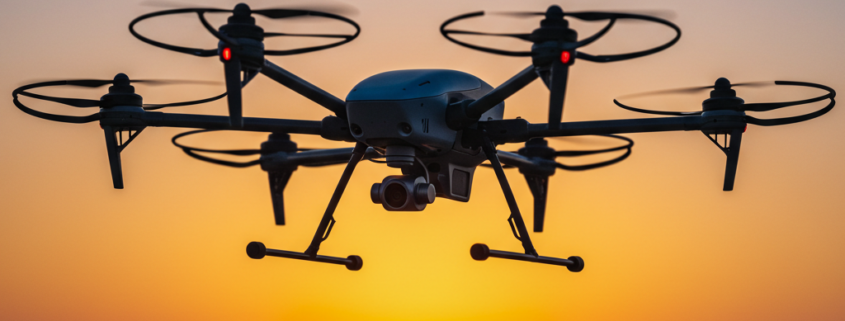Breaking the Barriers: The Biggest UAV Battery Challenges & Game-Changing Solutions
Unmanned Aerial Vehicles (UAVs), or drones, have revolutionized industries from agriculture to defense, logistics, and even entertainment. However, their full potential is still shackled by one crucial limitation—battery technology. The performance, range, and overall efficiency of UAVs are only as strong as the batteries that power them.
In this blog, we dive into the biggest hurdles that UAV batteries face, why they exist, and the cutting-edge innovations that could break these barriers.
1. The Flight Time Dilemma: How Long Can Drones Stay in the Air?
The Challenge:
The Achilles’ heel of most UAVs is their short flight duration. Despite advances, commercial drones still max out at 20 to 60 minutes on a single charge—nowhere near enough for long-range missions, surveillance, or extended delivery routes.
Why It Happens:
- Low energy density: Current battery tech lacks the storage capacity needed for long flights.
- Power-hungry operations: UAVs consume large amounts of energy for flight, navigation, and onboard equipment.
- Weight vs. capacity tradeoff: More battery capacity means added weight, which ironically reduces efficiency.
What’s the Solution?
- Next-gen batteries: Solid-state and lithium-sulfur batteries promise higher energy densities.
- Hybrid power sources: Solar panels and hydrogen fuel cells could provide extended endurance.
- In-air charging: Emerging wireless and inductive charging solutions may keep drones flying indefinitely.
2. The Heavy Burden: Battling Battery Weight
The Challenge:
Battery weight is a double-edged sword. A bigger battery means more power, but it also adds weight, reducing flight efficiency and maneuverability.
Why It Happens:
- Poor energy-to-weight ratio: Today’s batteries can’t store enough power without becoming too heavy.
- Structural constraints: UAVs are designed to be lightweight, restricting battery size and placement.
What’s the Solution?
- Graphene and aluminum-air batteries: These next-gen batteries could significantly reduce weight.
- Structural batteries: Imagine drones with built-in energy storage—frames that double as batteries.
- Aerodynamic optimization: Smarter designs could reduce energy consumption, offsetting battery limitations.
3. The Recharging Struggle: Slow Charge, Less Flight
The Challenge:
Downtime due to battery charging is a major roadblock, especially in time-sensitive industries like surveillance, agriculture, and deliveries.
Why It Happens:
- Current batteries take 30-90 minutes to charge.
- Heat buildup slows down the charging process to prevent overheating.
What’s the Solution?
- Ultra-fast charging tech: Lithium-titanate (LTO) batteries and supercapacitors could enable near-instant recharges.
- Battery swapping stations: Instead of recharging, simply swap in a fresh battery within seconds.
- Wireless charging pads: Inductive charging could enable drones to charge without landing.
4. Weather Woes: Battling the Elements
The Challenge:
Extreme temperatures—whether blistering heat or freezing cold—reduce battery performance and shorten lifespan.
Why It Happens:
- Cold conditions sap battery capacity, leading to shorter flights.
- Heat accelerates battery degradation, reducing long-term reliability.
- Humidity and moisture can cause short circuits or corrosion.
What’s the Solution?
- Temperature-controlled battery packs: Integrated heating and cooling systems can regulate battery temperature.
- Advanced electrolytes: New battery chemistries resistant to extreme conditions.
- Waterproof and insulated coatings: Protecting batteries from environmental damage.
5. The Aging Factor: Battery Lifespan & Degradation
The Challenge:
UAV batteries degrade over time, losing their ability to hold a charge, leading to reduced efficiency and higher operational costs.
Why It Happens:
- Batteries wear out after 300–500 charge cycles.
- Chemical degradation reduces overall performance over time.
- Deep discharges and overcharging accelerate battery wear.
What’s the Solution?
- AI-driven Battery Management Systems (BMS): Smart monitoring optimizes charge cycles to extend lifespan.
- Nanomaterial coatings: These slow down chemical degradation.
- Battery refurbishing programs: Repurposing used batteries for secondary applications before disposal.
6. The Price Tag Problem: Cost & Scalability
The Challenge:
High-quality UAV batteries are expensive, limiting affordability and large-scale deployment.
Why It Happens:
- Lithium, cobalt, and nickel are scarce and expensive.
- Manufacturing high-performance batteries is costly.
- Lack of standardization forces companies to develop custom solutions.
What’s the Solution?
- Sodium-ion and magnesium-ion batteries: These use more abundant materials, reducing costs.
- Mass production innovations: Increasing scale to lower prices.
- Interchangeable battery platforms: Standardized batteries that fit multiple UAV models.
7. The Fire Risk: Safety & Explosions
The Challenge:
Lithium-based batteries have a well-documented risk of overheating, catching fire, or even exploding.
Why It Happens:
- Thermal runaway: A chain reaction of overheating can lead to combustion.
- Physical damage: Crashes or punctures can cause dangerous malfunctions.
- Manufacturing defects: Poor-quality batteries increase risk.
What’s the Solution?
- Solid-state batteries: Safer and less prone to combustion.
- Fire-resistant enclosures: Protective casings can contain potential hazards.
- AI-powered monitoring: Early detection of overheating or faults before disaster strikes.
Conclusion: The Future of UAV Batteries
Despite these challenges, UAV battery technology is advancing at an unprecedented pace. The push for longer-lasting, faster-charging, and safer batteries is closer than ever, thanks to breakthroughs in chemistry, AI, and hybrid energy solutions.
Innovations like solid-state batteries, structural energy storage, hybrid solar-drone technology, and AI-driven battery management are set to redefine drone capabilities in the coming years. As these solutions take shape, UAVs will soar to new heights—literally and figuratively.
What’s Next?
From commercial deliveries to military surveillance, the future of UAVs is bright—but only if we solve the battery conundrum. The next frontier? Batteries that last for hours, charge in minutes, and never pose a safety risk.



Leave a Reply
Want to join the discussion?Feel free to contribute!